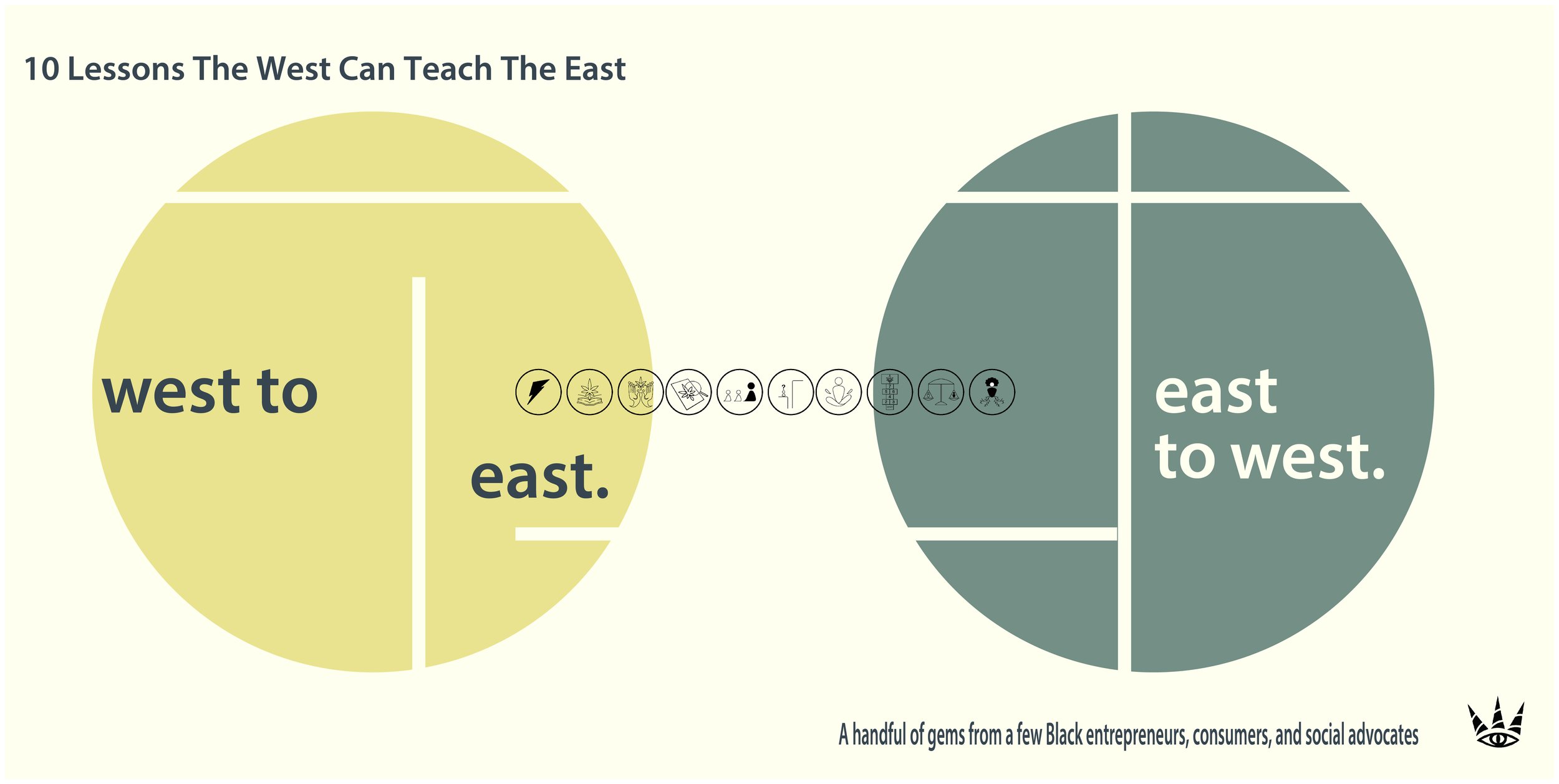What West Coast Cannabis Can Teach the East
2021 was an eventful year in the world of ouid. Both exciting progress and aggravating roadblocks were riddled within our efforts toward changing the perception of cannabis. Black folks and people of color in the industry have become more comfortable talking openly about the plant, cultivating community, and growing businesses despite the global challenges of 2021. Legalization has expanded throughout the country this year, but many states won’t be taking next steps until mid 2022. The east coast seems like the potential new home of the green rush — but it’s bigger than that. The way cannabis is conceptualized is changing almost everywhere.
The range and depth at which cannabis is thought of depends on where we are. Our experiences differ—within social equity conversations, legislation, consumption culture, plant education, etc. Black and Brown people share common experiences with cannabis, but everyone has a distinct perspective based on their geographical location. This means there’s a gap in information. California and neighboring legal states like Colorado have set the tone, being the most modern and advanced thus far. With the west leading the way, we must ask, what do BIPOC in cannabis on the east need to know? What can be done to get ahead? How can we reclaim this space?
We collected information to provide ten simple but significant takeaways. A handful of gems from a few Black entrepreneurs, consumers, and social advocates were shared with us. Through conversation and sourcing, we learned lessons the west can share with communities on the east coast.
10 takeaways:
1. Be action-oriented
Why: If you don’t see it being done, make a play and do it. Get comfortable taking a stance: speak up and out, advocate, build canna-community, take up space, be the change. We must act to cultivate what we want.
West to East: BIPOC on the west coast are paving the way. Cannabis events, conferences, restaurants, hiking clubs, boutiques, and agencies are all instances of people becoming innovative in the space. With legalization in western states, cannabis entrepreneurial ideation becomes safer and more expansive. When it’s legal in the east, what will you do?
“I joined the Philadelphia Association of Black journalists and through this Black media nonprofit we created two cannabis conferences to educate and activate our communities”
- Tauhid Chappell of Philadelphia Cannabusiness Association
2. Cannabis education is necessary
Why: We must learn cannabis at a deeper level, be students to the plant. We don’t know what we don’t know. There are gaps in plant education because we’re all in different places, literally and figuratively.
West to East: Cannabis is even studied at a collegiate level in the west, not that a degree makes the information more valuable but to see the evolution in how we discuss the plant is amazing. Especially since the war on drugs eliminated the possibility of there being ethical educational study of cannabis. Think of how cannabis education could be implemented in the east. Communal study? Coworking with ouid? Education programs?
“Cannabis has been used to eat as essential nutrients, herbal medicine, making clothes–you name it, cannabis has done it for centuries. So why are we so afraid?”
- Calan Ma’lyn of 69andSunny
3. Community is paramount
Why: Community means shared resources and sense of responsibility. History reminds all BIPOC that community has been the core of our cultures for ages. Forgetting the communities we’ve come from or belong to will leave us out of touch. We go further united. With only 19% of cannabis owners and founders being people of color, we should be sticking together.
West to East: With the recent robberies of Black owned dispensaries in northern California, two ideas of community stand out. BIPOC in Oakland came together to advocate for tax reform, support, and safety. But on the other hand, the disconnect and lack within the community shown through theft, leave open-ended questions. There’s work to be done.
“People need to feel seen and belong to a community. We have to be building relationships, genuine connections and find the needs locally of communities”
– Biseat Horning of Hood Incubator
4. Do your own research
Why: You must be your own expert to thrive in this space. It doesn’t matter if you only consume or if you’re only on the corporate side; make understanding cannabis as it relates to you a priority.
West to East: Cannabis is thoroughly studied on the west coast. From bud tender to cannabis doctor, having the right language and data are important. In the east we need testing labs, studies of industry trends, quality flower, new policies, scientific research, and cannabis innovations to dig deeper in exploring the plant. Loving cannabis or the industry isn’t enough. We need to understand it.
“This is why language matters. This is why the words we use to advocate for and promote cannabis knowledge, medicine, and science are important. We tear away stigma when we use language accurately”
- Dr. Rachel Knox of ACHEM
5. History must lead
Why: Rectifying harm starts with remembering and acknowledging the past. Cannabis prohibition did extreme damage to our communities; we can’t forget that. Advocacy for decriminalization, equitable policy, expungement, and giving back are our duties in this space.
West to East: Expungement in California still hasn’t completely happened, even though it was promised. Thousands of people are being discriminated against because of previous records that shouldn’t exist. Who will fight for these changes if we don’t?
“We (BIPOC) have to lead with the history of cannabis, of the damages of prohibition. We have to do the work that we have responsibility to remember, we need social advocates”
– Anthony Avalos of San Diego Cannabis Stakeholders Group
6. Real Challenges
Why: The cannabis space is challenging to navigate because BIPOC face heavy barriers and stigma. More specifically, there are huge gaps in capital, stifling gatekeeping practices, racist policies, lack of equity/resources, and ridiculous licensing fees.
West to East: Application fees for licensing alone in California can be thousands of dollars. Excise taxes for retailers are up to 15%. These barriers to entry can be discouraging. It’s no easy journey out here.
“Cannabis businesses are taxed excessively. Forty plus percent when all of the taxes are accounted for”
– Amber Senter of Supernova Women
7. Self-Reflect
Why: Remember your why. Reflect on your advantages, challenges, resources, and access. What are your intentions in the space? Who are you speaking to? What are you working toward?
West to East: White males still dominate the western industry. To be candid, many of them are serial entrepreneurs and venture capitalists who aren’t truly passionate about the plant *shrugs*. We don’t need any more of that in cannabis. The east has a chance to move very intentionally when it comes to how we are showing up and why.
“I’m here to educate, advocate for the people and help make impactful change”
- DJ Howard of Minorities for Medical Marijuana
8. This is the beginning
Why: The cannabis industry is still a baby. Everything is relatively new, not the plant or its history but legalization, education, mindful consumption, and industry expansion.
West to East: Cannabis doesn’t begin and end with California. Expand your thinking, broaden your network, start where you are. There’s likely a canna-community everywhere and if not, don’t be afraid to create it. The west is far ahead but still doesn’t have it all figured out.
“I moved from the northeast coast to southern California and discovered a whole new world. I looked at what cannabis meant in my life and the lives of others with new eyes. I realized things were behind on the east coast and it was extremely frustrating. I knew I had to share what I was learning and take action.”
– Dashayna Brown of BDBC
9. True social equity is non-negotiable
Why: No legal state has hit the mark with ensuring social equity yet. If we’re going to have comprehensive and effective social equity programs for folks of color and formerly incarcerated persons we need to get real. Policies that rectify harm of prohibition, access to greater capital, tax elimination or deduction, lower barriers to entry, and more resources should be prioritized in the conversation of equity.
West to East: Again, nobody’s got it right. It must be crafted and fought for. We must stay on top of government officials, legislation, and policy makers to ensure our demands are met.
“And Cali’s governor, who supposedly is a champion for equity, just released a cannabis budget looking to spend nearly six times more cannabis tax revenue on policing the unregulated market ($89 million) than achieving social equity initiatives ($15 million). Who is advising these folks?”
– Dasheeda Dawson of TheWeedHeadCo
10. We Have Roots Here, Don’t Forget
Why: People of color have deep roots in cannabis. From ancient strains grown in East Asia and Afghanistan to sativas grown in Africa, the history is long. Don’t let the colonization of this plant make you feel out of place.
West to East: Cannabis entrepreneurship demographics aren’t reflective of cannabis’ original caretakers, scholars, and consumers. We have the opportunity to reframe that perspective to one more accurate to our past.
“As an entrepreneur, as much as we have to set a certain tone and present a certain way, we cannot forget where we come from. Cannabis is about medicine. Period. Cannabis is just one way to introduce good health to the community.”
– Tsehaitu Abye of BDBC
Simple to digest, more important to practice. We can learn a lot from one another, no matter the coast. But with cannabis changing in the east, we can only imagine what things will be like a year from now. Black and Brown people on the east coast have major opportunities to grow, capitalize, and commune in this space. Study what the west is doing and do it better. It’s all fair game, why wouldn’t we want to be the best?

